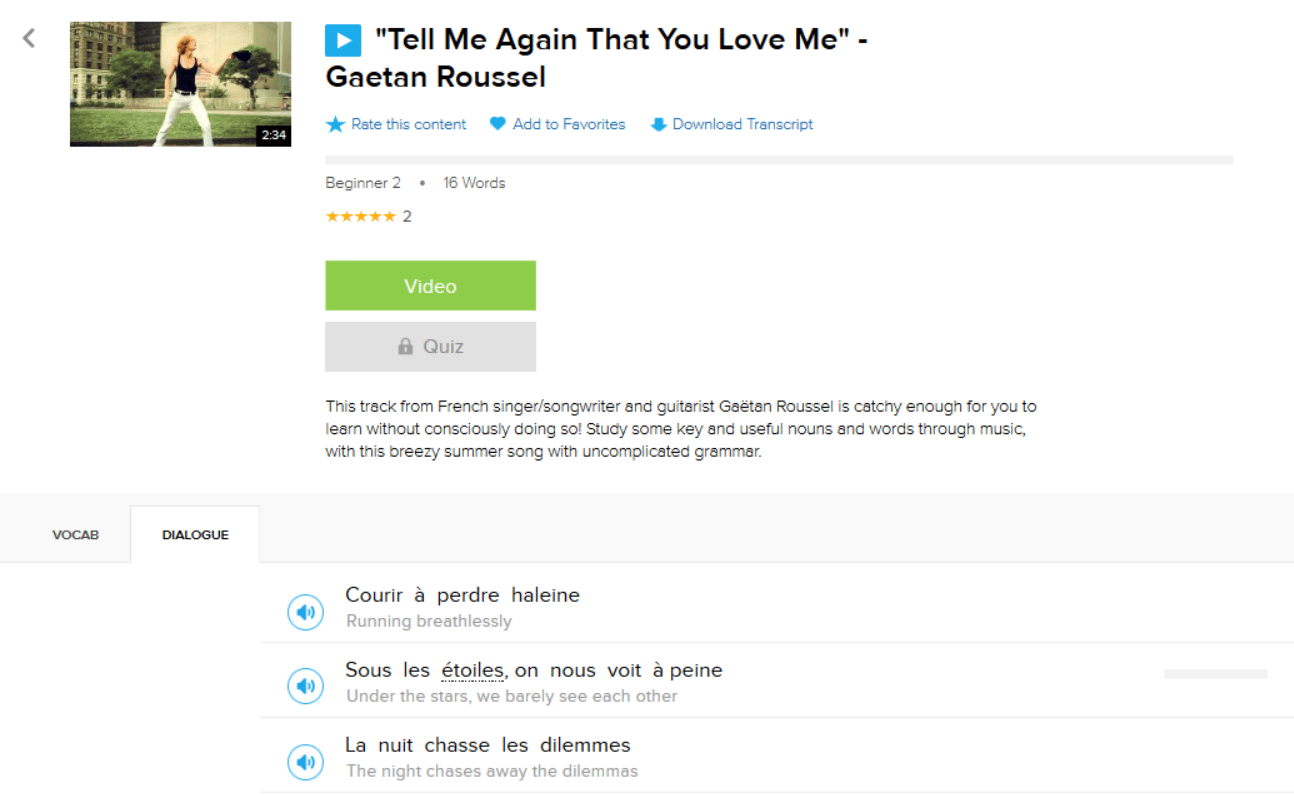Hobbies in French: 50+ Words and Phrases

Talking about your hobbies is a great way to practice French and expand your vocabulary. Whether you’re into sports, music, art or just curling up with a good book, there’s a French phrase for every pastime.
Learning how to discuss your interests not only boosts your fluency but also helps you connect with others who share your passions. In this post, we’ll explore the key vocabulary and expressions you need to chat about hobbies in French with confidence.
Download: This blog post is available as a convenient and portable PDF that you can take anywhere. Click here to get a copy. (Download)
How to Say “Hobbies” in French
There are actually two French words for talking about hobbies.
In casual conversations, you’d usually say passe-temps , which means activities that you do simply because you like them:
Mon passe-temps favori, c’est la lecture. (My favorite hobby is reading.)
Elle a plusieurs passe-temps, dont la peinture et le yoga. (She has several hobbies, including painting and yoga.)
The other word is loisirs , which is a bit more formal and includes all activities that you do in your free time:
Dans ce questionnaire, veuillez lister vos loisirs. (In this questionnaire, please list your leisure activities.)
Les loisirs en plein air sont mes préférés. (Outdoor leisure activities are my favorite.)
Now let’s go into the specific vocabulary for different hobbies!
French Vocabulary for Hobbies
Sports and Physical Activities
Roll a ball, hit a target or take to the hills. Whichever one you like the most, there are a lot of physical activities to choose from:
| English | |
|---|---|
| Le badminton | Badminton |
| Le basket-ball | Basketball |
| L'escalade de bloc | Bouldering |
| Le bowling | Bowling |
| Le cyclisme | Cycling |
| Les fléchettes | Darts |
| La pêche | Fishing |
| Le jardinage | Gardening |
| Le golf | Golf |
| Le handball | Handball |
| La randonnée | Hiking |
| Le jogging | Jogging |
| L'escalade | Rock climbing |
| Le rugby | Rugby |
| La course à pied | Running |
| Le ski | Skiing |
| Le snowboard | Snowboarding |
| Le football | Soccer |
| La natation | Swimming |
| Le tennis | Tennis |
| Le volley-ball | Volleyball |
| La musculation | Weightlifting |
| Le yoga | Yoga |
When talking about sports, especially if they’re ball games or involve teams, you’d typically use the verb jouer (to play) + the preposition à:
Je joue au basketball. (I play basketball.)
Some sports are paired with the verb faire (to do) instead.
Je fais de la natation tous les week-ends. (I go swimming every weekend.)
Games

Aside from sports, you might also be into games that are less physical, like card games and video games:
| French | English |
|---|---|
| Le billard | Billiards |
| Les jeux de société | Board games |
| Le bridge | Bridge |
| Le jeu de cartes | Card games |
| Le jeu de dames | Checkers |
| Les échecs | Chess |
| Le poker | Poker |
| Les puzzles | Puzzles |
| Le jeu de rôle | Role-playing games (RPG) |
| Les jeux vidéo | Video gaming |
The most common verb for games is jouer as well:
Je joue aux jeux vidéo. (I play video games.)
Elle joue au poker. (She plays poker.)
An exception is with puzzles:
Nous faisons des puzzles. (We do puzzles.)
Music

Music is known as the universal language; its melodies and rhythms speak to people from all walks of life, all over the world. If you spend some of your leisure time singing or playing tunes, this vocabulary will keep you rapping about your harmonious hobby:
| French | English |
|---|---|
| Le violoncelle | Cello |
| La danse | Dancing |
| La batterie | Drums |
| La flûte | Flute |
| Aller à des concerts | Going to concerts |
| La guitare | Guitar |
| La harpe | Harp |
| Écouter de la musique | Listening to music |
| Le piano | Piano |
| Le saxophone | Saxophone |
| Le chant | Singing |
| La trompette | Trumpet |
| Le violon | Violin |
| Le ukulélé | Ukulele |
If you play a musical instrument, the phrase for that would be jouer + the preposition de:
Je joue de la guitare. (I play guitar.)
Elle joue du violon. (She plays the violin.)
Creative Activities

Artistic hobbies are some of the best-loved, with an enduring popularity around the world.
| French | English |
|---|---|
| La pâtisserie | Baking |
| La calligraphie | Calligraphy |
| Le crochet | Crochet |
| La cuisine | Cooking |
| Le dessin | Drawing |
| La décoration intérieure | Interior decorating |
| La création de bijoux | Jewelry making |
| Le tricot | Knitting |
| La peinture | Painting |
| La photographie | Photography |
| La poésie | Poetry |
| La poterie | Pottery |
| La sculpture | Sculpture |
| La couture | Sewing |
| L'aquarelle | Watercolor painting |
| La menuiserie | Woodworking |
| L'écriture | Writing |
For these types of hobbies, the standard verb is faire:
Je fais de la peinture. (I do painting.)
Some hobbies might use the verb pratique (to practice):
Je pratique le tricot. (I practice knitting.)
Other Hobbies

With new novels, texts and films coming out all the time, being a bookworm or a movie buff is a hobby that will never get boring. Here are some additional French vocabulary for hobbies:
| French | English |
|---|---|
| L'observation des oiseaux | Birdwatching |
| Le camping | Camping |
| La dégustation de vin / de fromage / de café / de chocolat | Cheese / Coffee / Chocolate / Wine tasting |
| Apprendre une langue | Learning a language |
| La méditation | Meditation |
| La lecture | Reading |
| Le voyage | Traveling |
| Le bénévolat | Volunteering |
| Regarder des films / des séries | Watching movies / TV series |
To get more practice with talking about hobbies (and other conversational topics), it helps to immerse in French media and get to know the culture better. FluentU is a good way of doing this.
FluentU takes authentic videos—like music videos, movie trailers, news and inspiring talks—and turns them into personalized language learning lessons.
You can try FluentU for free for 2 weeks. Check out the website or download the iOS app or Android app.
P.S. Click here to take advantage of our current sale! (Expires at the end of this month.)
Describing Your Hobbies in French
So you already know the French names for different hobbies! Here are some important grammar points that’ll let you describe your hobbies even further:
Likes and Dislikes
You can express that you like (or even love) a hobby with the verbs aimer and adorer:
J’aime lire. (I like to read.)
Nous adorons faire de la randonnée. (We love hiking very much.)
Of course these verbs can apply to people, but you can also gush about your hobbies too (and even food!) with them.
Another phrase is etre passionné(e) de / par…., which is for expressing that you’re deeply passionate about something and you’ve invested a lot into it:
Je suis passionné de photographie. (I am passionate about photography.)
Alternatively, you might want to say that you’re not interested in a specific hobby. For this, you would use the negative form ne… pas:
Je n’aime pas faire de la randonnée. (I don’t like hiking.)
Je ne fais pas de sport. (I don’t do sports.)
Here’s a detailed guide on the negative form if you need to brush up!
Frequency
Of course, you can also talk about how often you do your hobby. That’s where these adverbs come in:
| French | English | Example |
|---|---|---|
| Toujours | Always | Elle joue toujours au tennis le week-end. (She always plays tennis on the weekend.) |
| Souvent | Often | Il va souvent à la salle de sport. (He often goes to the gym.) |
| Parfois | Sometimes | Nous regardons parfois des films le vendredi soir. (We sometimes watch movies on Friday evenings.) |
| Rarement | Rarely | Je lis rarement des bandes dessinées. (I rarely read comics.) |
| Jamais | Never | Tu ne joues jamais au football. (You never play football.) |
As you might have noticed from the examples, these are all placed after the verb (unlike in English).
Try out these other phrases too if you want to be more specific:
| French | English | Example |
|---|---|---|
| Tous les jours | Every day | Elle écrit dans son journal tous les jours. (She writes in her journal every day.) |
| Une fois par semaine | Once a week | Nous allons à des cours de poterie une fois par semaine. (We go to pottery classes once a week.) |
| Deux fois par mois | Twice a month | Je visite le musée deux fois par mois. (I visit the museum twice a month.) |
| Chaque année | Every year | Nous faisons du camping chaque année. (We go camping every year.) |
Practice Resources
Hobbies aren’t just a way to kill time; they’re also a way to connect with other people. Share les plaisirs des loisirs (the pleasures of hobbies) with your French-speaking friends, whether you simply talk about your pastimes or participate in them together.
To practice your hobby-related French vocabulary in stimulating and entertaining ways, try these online exercises, quizzes and games.
French-Games.net offers topic-focused, colorful lessons and games for learning simple French hobby vocabulary. European-style road signs lead you through a series of vocabulary cards, exercises and classic games like Memory (Pelmanism) and Hangman.
French Vocabulary: Sports and Hobbies
Either study or play with Quizlet: Take your pick of flashcards, writing or spelling exercises to help you master sports and hobby vocabulary. Test your knowledge or race the clock in a hobby word matching game.
Take a deep dive into your favorite leisure activity with these detailed sets of French hobby words. Escape the executioner’s noose by divining the hidden words to beat Hangman, match the correct word to its picture or successfully complete a listening comprehension exercise.
However you like to spend your free time, make sure you spend some of it discussing your leisure pursuits in French.
After all, language learning is a very satisfying hobby.
Download: This blog post is available as a convenient and portable PDF that you can take anywhere. Click here to get a copy. (Download)
And one more thing...
If you like learning French vocabulary on your own time and from the comfort of your smart device, then I'd be remiss to not tell you about FluentU.
Other sites use scripted content. FluentU uses a natural approach that helps you ease into the French language and culture over time. You’ll learn French as it’s actually spoken by real people.
FluentU has a wide variety of great content, like interviews and web series, as you can see here:

FluentU brings native videos within reach with interactive subtitles.
You can tap on any word to look it up instantly. Every definition has examples that have been written to help you understand how the word is used.

For example, if you tap on the word "crois," you'll see this:

Practice and reinforce all the vocabulary you've learned in a given video with FluentU's adaptive quizzes. Swipe left or right to see more examples for the word you’re learning and play the mini-games found in the dynamic flashcards, like "fill in the blank."

As you study, FluentU tracks the vocabulary that you’re learning and uses this information to give you a 100% personalized experience.
It gives you extra practice with difficult words—and reminds you when it’s time to review what you’ve learned.
Start using the FluentU website on your computer or tablet or, better yet, download the FluentU app from the iTunes or Google Play store. Click here to take advantage of our current sale! (Expires at the end of this month.)









